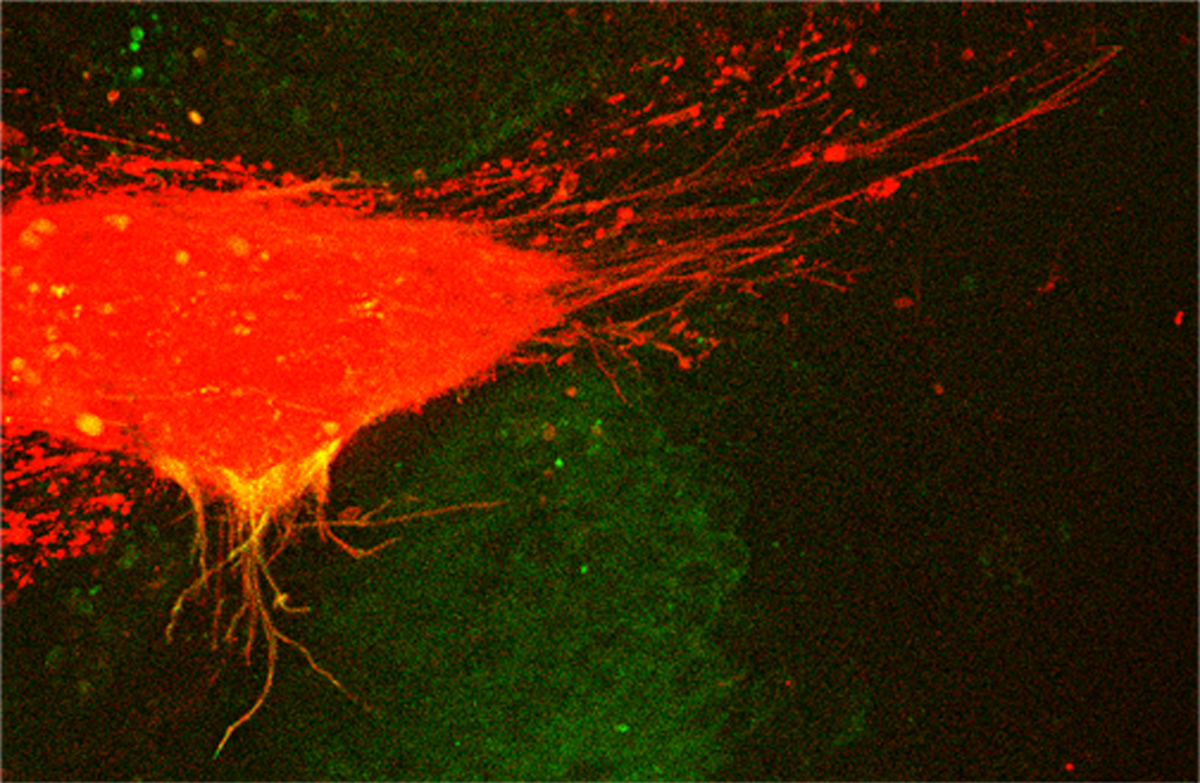Kornberg Lab

About us

About us
Research in the Kornberg lab investigates cell-cell signaling processes that regulate and sculpt organogenesis and morphogenesis during development. We apply a variety of approaches, including classical and molecular genetics, and histological techniques ranging from fluorescence microscopy to fine structure analysis with the electron microscope. The systems we study include oogenesis, embryogenesis, and the development of various organs including airway, lung and various other epithelial tissues in Drosophila. Drosophila is ideal for these studies because of the many experimental tools with which this system is endowed and because of its usefulness as a model for understanding human development. The following example from our previous work nicely illustrates these attributes.
Our studies of the engrailed (en) gene revealed that en directs a genetic network in many tissues of the fly, functioning to both positively and negatively regulate expression of a small number of key target genes. We showed that En positively regulates the hedgehog (hh) gene and that it negatively regulates targets of Hh signal transduction, including for example, cubitus interruptus (ci) and patched (ptc). Elegant in its simplicity, this network generates spatially distinct realms of expression - one in the Posterior developmental compartment that expresses en and hh, and a second in the Anterior developmental compartment that lacks en expression but receives the Hh signal and expresses ci and ptc (Kornberg et al, 1985; Tabata et al, 1995). In the wing imaginal disc, this network creates a developmental organizer where it activates expression of decapentalplegic (dpp) in a narrow stripe of cells along the Anterior/Posterior compartment border (Tabata, Schwartz, Gustavson, Ali and Kornberg, 1995). The significance of this genetic network can be appreciated at several levels. It is one of the most elegant in biology. It reveals at cellular resolution how a developmental organizer is generated. And it identifies key proteins whose human homologs, when mis-regulated, cause cancer or birth defects.
This is but one example in insect and vertebrate development of sharing of ancient systems that control growth and patterning. Among the many other examples that have been identified during the past several decades are the genetic networks that generate and regulate the heart, eye, muscle, appendage, epidermis, and innate immune system. In addition, expression of human genes in flies has proven to be a valuable way to study a number of human disease processes, including cancer, Parkinson’s, Alzheimer’s, and Huntington’s and other triplet-repeat disorders. Such work and the progress it represents are deeply gratifying, and one of the lessons we take is that sharing of fundamental mechanisms between insect and vertebrate systems is likely to be far greater than we can accurately predict today. We continue to pursue studies of Drosophila development, taking advantage of the mechanistic detail and efficiencies that this system offers, and expecting that the insights we learn will be generally relevant to organ development.